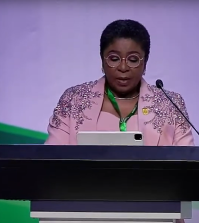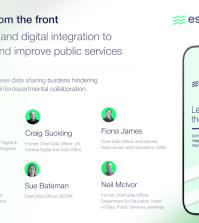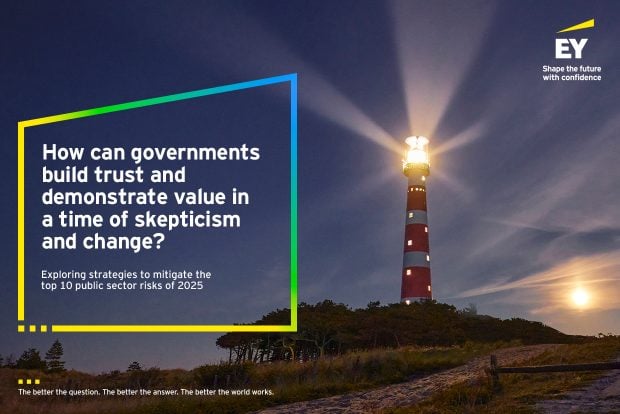Blockchain: hype or hope?

A year ago, people got very excited about blockchain. Then the shine wore off – but David Whitehouse finds that, behind the hype, the technology is beginning to find real applications
Over the last couple of years, endless articles and research papers have been produced on blockchain: the ‘distributed ledger’ technology that has so excited tech publications and digital firms’ marketing teams. But has blockchain yet found a practical application in the real world of civil service operations and service delivery? As the concept exits the ‘hype cycle’, does anything of substance remain?
Actually, yes. At an OECD event on blockchain held in September, delegates heard that there are now more than 200 examples of the technology deployed in public services worldwide. The examples provided by Marcos Bonturi, the OECD’s director for public governance, included Mongolia’s introduction of a blockchain to authenticate medicines – some 40% of pharmaceuticals on sale in the country are reckoned to be fake – and Italy’s development of a system to track academic credentials.
Providing the online world with visibility of a set of transactions – and making it impossible to alter records after they’ve been created – blockchain technologies have proved useful in cryptocurrencies, where they provide an incontrovertible record of ownership. And applications are emerging in public services, said Bonturi: in Texas a blockchain is helping the homeless to access public services, while in Ghana the government is working with private partners to build digital land registries. A blockchain-based land registry is already working well in Estonia, he added, and countries including Sweden and Chile are hoping to follow the Baltic nation.
Further deployments are in the pipeline. Blockchain has the potential to help customs agencies worldwide, according to a recent working paper from the OECD: the State of the Art in The Use of Emerging Technologies in the Public Sector. By providing much greater transparency and traceability for the contents of trucks and ships arriving at national borders, the paper says, blockchain could improve security, tax revenues, record-keeping and efficiency. But there are no examples of blockchain in operation on the world’s borders: Boris Johnson’s talk of “technological solutions” enabling the UK and Irish regulatory regimes to diverge without creating the need for a physical border remains firmly in the world of science fiction.
Shine has worn off
In general, though, discussions of blockchain’s potential have moved steadily from the fantastical to the realistic. “There is much more scepticism than there was two to three years ago” over blockchain’s potential, says Barbara Ubaldi, the paper’s lead author and deputy head of reform of the public sector at the OECD in Paris. “We’ve moved beyond the hype.”
And behind that hype, says Ubaldi, progress on delivering blockchain applications in the public sector has been slow. There is “no strong evidence of progression” in many areas, she believes: central challenges include “capacity construction in the public sector” and an “urgent need” for closer collaboration with the private sector. Other key obstacles include a lack of high-quality data, a need for the creation of common standards, and poor interoperability between public sector IT systems.
Risk aversion, the OECD notes, is an important barrier. Two thirds of the countries surveyed in an OECD study said they prioritise standardised solutions over systems built around business needs, with many countries preferring to use proven technologies rather than exploring untested alternatives. That’s reflected in Blockchain In Action State of the UK Market, a report published by Digital Catapult in November 2018, which finds that blockchain companies in the UK are still struggling to find clients outside the financial-services industry.
That risk aversion is exacerbated by public bodies’ lack of confidence over the regulatory environment. “Regulators are behind the curve” on setting out rules governing issues such as the use of data and the protection of citizens’ privacy, says Bonturi, arguing that many countries lack the kind of regulatory framework required for blockchain to advance beyond well-meaning but small-scale pilot schemes. The countries that can progress the fastest, Bonturi adds, will be those that offer the “path of least resistance” in terms of regulatory obstacles.
Ways forward
Still, there are bright spots in some countries – providing useful lessons for civil servants elsewhere. The OECD report praises the introduction by governments including Australia, Estonia, New Zealand and the UK of digital marketplaces, which ease the procurement of advanced digital technologies and the commissioning of small suppliers. Since the 2014 launch of the UK Digital Marketplace, the OECD says, it has seen over £4.3bn (US$5.5bn) worth of contracts pass through it – with nearly half of that going to small and medium-sized enterprises. That was followed in the UK this year by the introduction of SPARK, an innovation marketplace that lets public sector customers access the latest technologies.
Stronger collaboration with the private sector could also hasten progress. Chile, Panama and Latvia are among countries that have promoted public-private collaboration on pilot schemes testing emerging technologies. And Estonia has provided a “sandbox” environment for technology companies to work on applications and solutions.
To realise the full potential of blockchain’s distributed, universally-transparent structures, though, governments may have to accept that many blockchain applications are best led by sectoral bodies or private companies. Many public sector blockchain experiments have followed a centralised, government-led approach, according to a recent study by the EU Joint Research Centre, with officials retaining most of the decision-making powers. But one of the technology’s key strengths is its ability to provide accurate, verified information to everyone involved in a field of activity; and if they lack the authority to make decisions using it, much of blockchain’s potential may remain unrealised.
Accrediting academics
The EU Joint Research Centre report gives as an example a Maltese government project, begun in 2017, which is designed to verify academic credentials. The ‘Blockcerts’ open standard on which it is based allows the creation, issuing, viewing, and verification of certificates through blockchain.
The application was first developed in 2015 by Massachusetts Institute of Technology and the blockchain credentialing start-up Learning Machine. It allows easy integration with existing academic record-keeping systems, and provides a wallet giving users full ownership of their records. And the system saves educational institutions money, removing the need to check certificate copies or transcripts. This year, Italy began using the similar ‘Diplome’ system on a still larger scale to verify academic credentials.
Blockchain finds an identity
The centre’s report points out that this model could be extended to authenticate other forms of identity and accreditation, noting that Malta is exploring its use to verify the identity of refugees in public service delivery. The main barrier to wider adoption, researchers say, is a lack of consistency between countries’ regulatory and legislative frameworks, which mitigates against the development of internationally-accepted blockchain identity systems.
So blockchain is beginning to find genuine applications in public service delivery. And these, naturally, are those that best suit the technology’s characteristics: providing global visibility of agreements and transactions between individuals, blockchain can provide certainty and clarity for all those active in a sector – government bodies among them.
Currently, says Ubaldi, blockchain’s greatest potential lies in identity verification. A fifth of the world’s population, the OECD says, are still without a legal or officially recognised identity. So the opportunities are obvious – but don’t believe the hype.























